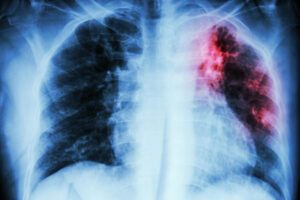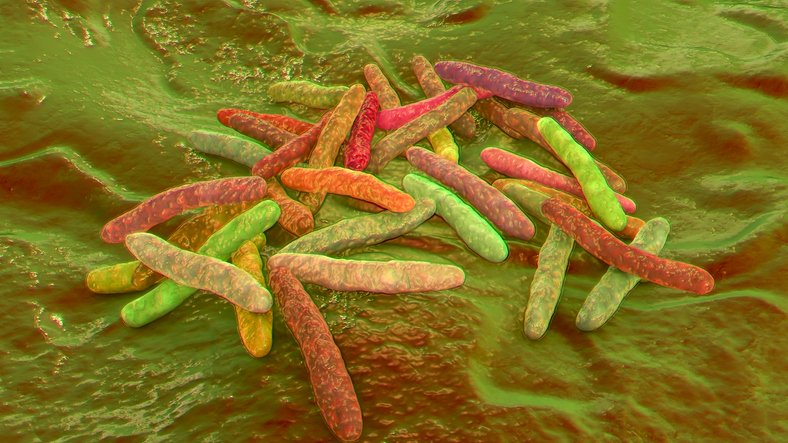Researchers from the University of Pittsburgh Center for Vaccine Research report that innate CD8+ lymphocytes are essential for curbing tuberculosis (TB) the disease. They also discovered that Interleukin-15 plays an important role in infection control and could potentially be used to boost the efficacy of existing and future TB vaccines. The team’s study appears in the Journal of Experimental Medicine.
“The functional role of CD8+ lymphocytes in tuberculosis remains poorly understood. We depleted innate and/or adaptive CD8+ lymphocytes in macaques and showed that loss of all CD8α+ cells (using anti-CD8α antibody) significantly impaired early control of Mycobacterium tuberculosis (Mtb) infection, leading to increased granulomas, lung inflammation, and bacterial burden,” wrote the investigators.
“Analysis of barcoded Mtb from infected macaques demonstrated that depletion of all CD8+ lymphocytes allowed increased establishment of Mtb in lungs and dissemination within lungs and to lymph nodes, while depletion of only adaptive CD8+ T cells (with anti-CD8β antibody) worsened bacterial control in lymph nodes.
“Flow cytometry and single-cell RNA sequencing revealed polyfunctional cytotoxic CD8+ lymphocytes in control granulomas, while CD8-depleted animals were unexpectedly enriched in CD4 and γδ T cells adopting incomplete cytotoxic signatures. Ligand-receptor analyzes identified IL-15 signaling in granulomas as a driver of cytotoxic T cells. These data support that CD8+ lymphocytes are required for early protection against Mtb and suggest polyfunctional cytotoxic responses as a vaccine target.

“This is an unusual finding,” said senior author JoAnne Flynn, PhD, distinguished professor and chair of microbiology and molecular genetics at Pitt. “No one before us has shown that CD8+ lymphocytes make a difference early in the infection in a translatable nonhuman primate model, but our findings suggest that these innate immune cell populations are actually playing an important role in restraining the initial infection.”
Two phases
The immune response over the course of tuberculosis infection has two phases. The first six weeks after the infection are characterized by the influx of quick-acting immune cells that rush to the site of infection, be that the airways or the lung, to kill the bug and limit the damage quickly, by all means necessary.
Unlike the early innate immune response, the adaptive immune response that emerges after eight to 10 weeks of infection is more fine-tuned and aimed at precisely targeting the specific infection-causing pathogen and killing it as efficiently as possible.
In general, the exact dynamics of the immune response in tuberculosis, and the role of fast-acting CD8+ lymphocytes was unclear.
Flynn and her team found that the infection was developing a lot faster and spreading further in macaque monkeys whose innate CD8+ cells were depleted than in monkeys whose total CD8+ T cell population was intact, or whose adaptive CD8+ T cells were removed, suggesting that innate CD8+ cells play a crucial role in limiting the infection in its early stages.

The scientists found that in monkeys with depleted innate CD8+ cells, other immune cells tried to take over the function of fast responders, probably in response to IL-15. But because those cells lack the natural machinery that would enable them to deliver molecules that could kill the bacterium, the infection-clearing immune response was incomplete.
As a next step in their research, scientists are studying whether IL-15 administered together with an existing TB vaccine can increase protection and make the vaccine more effective.
The study was a collaboration between Flynn’s lab and Philana Ling Lin, MD, of the UMPC Children’s Hospital of Pittsburgh, Alex Shalek, PhD, of MIT, and Sarah Fortune, MD, of Harvard University.


